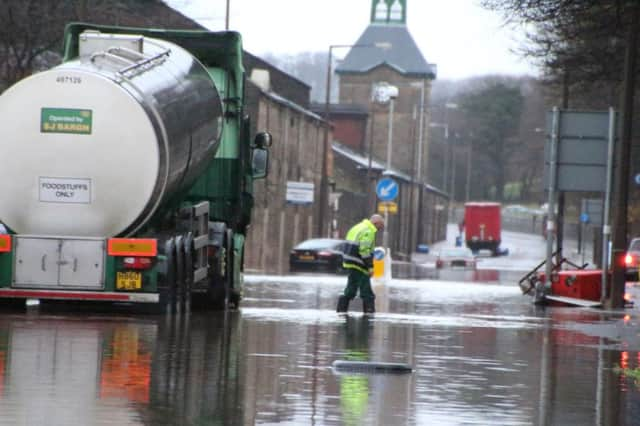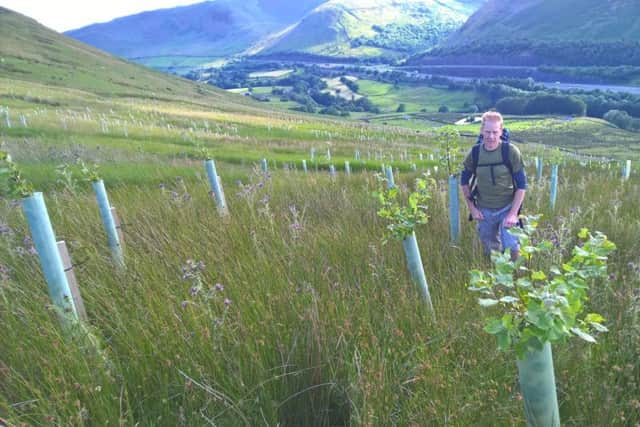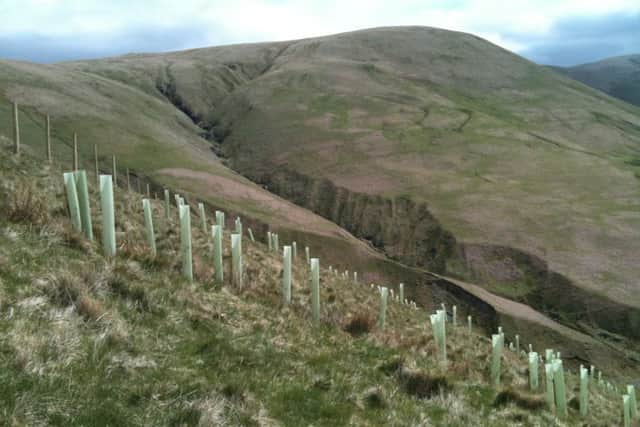Flooding solution lies in new £9m river defences


The scheme would help reduce the risk of flooding to the city’s electricity substation, and seek to avoid a repeat of the catastrophic events in December, which left 60,000 homes and busineses without power and caused millions of pounds worth of damage to property.
The Environment Agency proposals for the east side of the river between the M6 and Skerton Weir would also help to protect businesses along Caton Road, many of which have still not re-opened almost two months on.
Advertisement
Hide AdAdvertisement
Hide AdThe planting of more than 60,000 new tree saplings on common land at Tebay is also expected to help stem the massive flow of the Lune during periods of prolonged heavy rainfall.


Andy Brown, the Environment Agency’s flood and coastal risk manager for Cumbria and Lancashire said there had been “a phenomenal amount of rain” leading up to the floods on December 5.
A combination of very high river levels, high tides, saturated ground and heavy rainfall overwhelmed the existing defences in many places in the city. “There’s always a risk for places like Lancaster, and it’s critical that we and other organisations prepare and plan for what could happen in the future,” he said.
“We’ve been working closely with councils, police and the fire service to prepare for similar emergencies.
Advertisement
Hide AdAdvertisement
Hide Ad“It’s something we also need to do with communities involved in the planning for and prevention of flooding.


“We need community groups to come forward with residents and businesses, and in Lancaster’s case particularly businesses as the city has experienced a substantial business impact.
“One business in Caton Road for example lost £2m of stock.”
Mr Brown said the city also suffered because of surface run-off from roads.
“When the river is full, the outflows get locked in, and it’s the inability of it to drain into the river.


Advertisement
Hide AdAdvertisement
Hide Ad“That’s one of the things we’re going to have to look at in the future.
“It is certainly an opportunity to capitalise on risk awareness.
“We’ve known that there’s a need for further works upstream around the Caton Road area for a while, but we haven’t been able to bring it forward and deliver it.
“Our previous funding levels were focussed on people’s homes.


Advertisement
Hide AdAdvertisement
Hide Ad“We struggle to make it stack up financially for businesses but now we’re in active discussions with the Lancashire Enterprise Partnership about funding from central government, as well as European and local funding, in terms of protection for businesses.
“Sadly this event has demonstrated the need for this.”
Coun Janice Hanson, cabinet member with responsibility for planning at Lancaster City Council, said the scheme had been on the table for the last 12 months. “The proposal is for it to be built on the council’s land,” she said.
“Unfortunately the government had been unwilling to find the money to develop the scheme, but now appear to have woken up to the benefits due to the recent flooding.
“It’s good news for all those businesses and residents along Caton Road and will go a long way in helping to prevent future flooding along this stretch of the Lune.
Advertisement
Hide AdAdvertisement
Hide Ad“Details of the scheme are still being developed but it will be led by the Environment Agency.”


Mr Brown said: “It could be an enhancement of the flood embankment, or flood walls.
“The work would focus on the area between the new M6 link bridge and the bridge at Skerton.
“We have to be mindful of the multi-use path that runs along the river and we’d want to maintain and keep that as well.
Advertisement
Hide AdAdvertisement
Hide Ad“We’re hoping to confirm this year whether we’ve got that funding package together and then it could be 18 months to two years before we’re on the ground for construction.
“We could be looking at between £7m to £9m worth of funding.”
Mr Brown said that no single defence could ever guarantee complete protection, and this was part of a wider conversation authorities are having about how best to protect places from flooding.
“The government has set up the National Resilience Review as a result of an event that’s never been seen before,” he said.
Advertisement
Hide AdAdvertisement
Hide Ad“The way I see it is it’s a jigsaw of measures, including upstream natural flood management, which includes the planting of more trees, and using farmland for flooding so the speed and rate of water doesn’t build up for urban areas.
“I’m definitely finding that this event has had more of an impact on the public consciousness than any other in the past, and that people are thinking about things in a different way.
“The floods may have receded for now but the memory and the impact will never go away.
“It’s becoming ever evident that one of the consequences of climate change is an increasing number of serious flooding events.”
More trees answer to flooding woes
Advertisement
Hide AdAdvertisement
Hide AdOver the past two years, the Woodland Trust has spearheaded a project which has resulted in the planting of 62,000 new trees on Tebay Common.
The project aims to slow down the water which runs off the Common and into the river Lune at times of heavy rainfall, ultimately reducing the effect in Lancaster.
The land is owned by the 7th Earl of Lonsdale, with 20 farmers having rights to graze on the fields.
Peter Leeson, partnership manager for The Woodland Trust, has overseen the project, which he says is vital to reduce flooding and increase biodiversity.
Advertisement
Hide AdAdvertisement
Hide AdHe said: “We did the first planting two years ago, but it’s something we’ve been pushing for a while.
“Before we started with agriculture in this country, 80 per cent of the land was covered in trees. What we’ve done is whittle away at that wild wood, and now less than two per cent of the original cover is there.
“It’s around 20 per cent when you include new woodland.
“The landscape that we’ve changed over the years doesn’t function very well, but we now have an opportunity to change that.
“One is building flood defences, and the other is using natural processes.”
Advertisement
Hide AdAdvertisement
Hide AdThe Woodland Trust is working with the landowner, farmers and Natural England to modify the land use on Tebay Common.
The Common covers 1,040 hectares in total with 126 hectares allocated for the 62,000 new trees.
“It’s a broad range of species, including hawthorn, which will also greatly benefit pollinators,” Peter said.
“There’s also alder, willow, crab apple, birch and oak – a nice range of native British species.
Advertisement
Hide AdAdvertisement
Hide Ad“It will be quite open at the top of the fell and more densely packed at the bottom.
“This will benefit the landscape and also the quality, and quantity, of the water in the river.”
Peter said that while the project would help to reduce flooding, it will also have other important benefits.
“Biodiversity both on the land and in the river will also be much improved,” he said.
Advertisement
Hide AdAdvertisement
Hide Ad“There will be more fish in the river, and therefore more birds around.
“More vegetation and leaf litter will be created, and this intercepts running water and holds it up in the ground for a while, which in turn slows down the impact of rainfall.
“In summer a tree can re-evaporate 30 per cent of the water, which is huge, and tree roots work by having air pockets around them, so water can be held there too.
“Percolation into the soil is extremely helpful.
“In short trees and other vegetation will hold water by intercepting it and slowing it down and all this adds up to a slower release of water.”
Advertisement
Hide AdAdvertisement
Hide AdPeter said other schemes, including in Rydal in the Lake District, were being created for similar reasons.
He added: “We need more woodland which provides us with greater biodiversity.
“As a country we are very proud of our natural environment, and we need to re-connect with the Lune, where it comes from and how land management can affect it.”